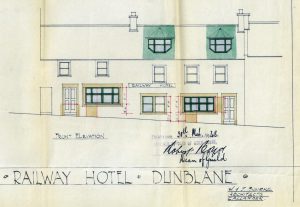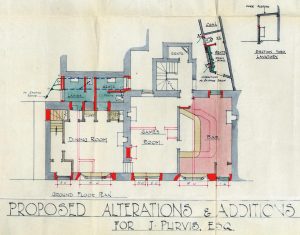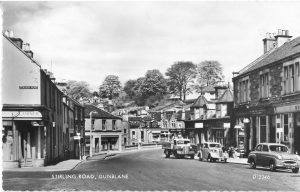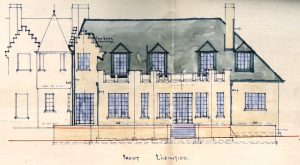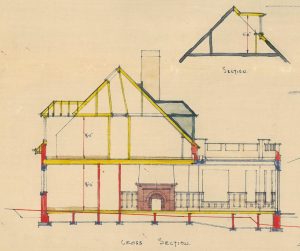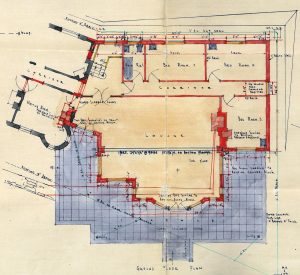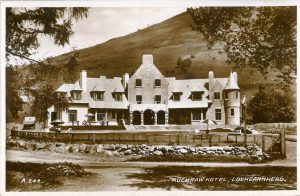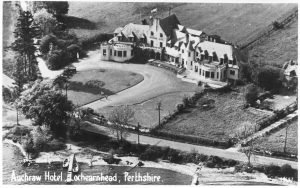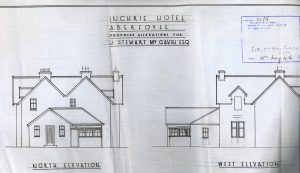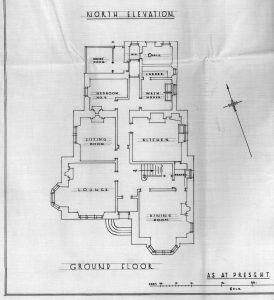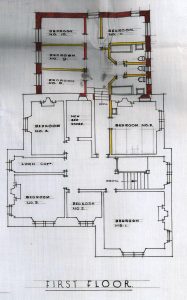The Railway Hotel, Dunblane, 1948
The Village Inn on Stirling Road, Dunblane was originally an 18th century barn. By the early 19th century it was converted into an inn, then known as the Star Inn. With the opening of the nearby railway station in Dunblane in 1846 the inn was renamed the Railway Hotel.
Stirling Council Archives holds Dunblane Dean of Guild building plans. This collection includes the architectural drawings of improvements made to the hotel in the 1940s.
Auchraw Hotel, Lochearnhead, 1936
The Archives also holds building plans for the former Western District of Perthshire which is now part of the current Stirling Council area. This includes plans for extending Lochearnhead’s Auchraw Hotel in 1936. The extension is on the eastern side of the hotel and added 14 new bedrooms, a large lounge and outdoor terrace. The architects involved were G.P.K Young & Son, Perth.
The Archives postcard collection shows how the hotel looked before and after the extension.
At this time Auchraw was a large Temperance Hotel owned by Allan Sharpe. The hotel has since been demolished. It was situated just east of Auchraw Terrace and south of Vorlich Road, looking out over the Loch.
Inchrie Hotel, Aberfoyle, 1936
Inchrie Hotel is located to the south of Aberfoyle just off Duchray Road. The Archives holds plans for alterations made to the hotel in the 1930s. These changes added an additional floor to the back of the hotel to provide more bedroom accommodation and bathrooms. The building application notes that ‘this is necessitated by the short seasonal trade’. The plans were drawn up by the hotel owner who was also an architect, James Stewart McGavin.
Inchrie Castle Hotel was closed in 2009. The Hotel has been linked to various historical events including the signing of the Second Covenant, a pledge to create a Scottish Parliament. The Stone of Destiny was also hidden here in the 1950s.
All these plans and many other archives can be viewed at the Archives searchroom in Stirling.
Sources:
